In Fall 2024 and again in Spring 2025, Kate Rae Davis walked the famed Camino de Santiago as she faced a very personal journey with burnout. This series of pilgrimage paths attracts nearly 500,000 people each year who walk at least 100 km (62 miles), with many walking the full 800 km (500 miles) of the French Route – and sometimes farther.
Dr. Davis and the Center for Transforming Engagement is in the initial stages of new resilience research to study those who walk the Camino to further understand its impact on healing burnout and developing resilience. If know someone who plans to walk the Camino, please share.
Searching for Healing
“How was your sabbatical?” Always an enthusiastic, well-intentioned question that I attempt to demure and redirect. Most times, this fails. “What did you work on while you were away?”
In academia, especially, a sabbatical is not only time away from regular work. Faculty propose research projects or writing ambitions, often ones that include travel, always ones that are close to their interests. It’s invigorating not only because it’s time out of the classroom and free from grading responsibilities, but even more so because they get to dive into a topic close to their intellectual heart.
The challenge for me, in these conversations, is that my sabbatical wasn’t really a sabbatical. It was a medical leave, in response to a medical crisis. My hormone system was collapsing due to chronic stress. I couldn’t sleep, I couldn’t eat – sometimes even the scent of food threw me into nausea that sent me running for the nearest bathroom. I couldn’t regulate my emotions, and would start sobbing in meetings. When the test for my hormone levels came back, my doctor told me that from my hormones it looked like I was twice my actual age, and that recovery would be two years at a minimum.
My early recovery included slow walks after every meal, carefully monitoring my heart rate to stay below stress level. When he could, my husband would join me, and kindly let me vent. “Almost everyone I work with is a pastor or a professor,” I spew. We’re going up a mild incline so I need to slow my pace even further. “Both pastors and professors get to plan their sabbaticals years in advance, and do interesting things with them!” I stop entirely and turn to him. “I only get a break because I pushed myself past the breaking point.” And I’m once again in my absolute least favorite activity: Crying in public. He lets me use his chest as a privacy screen and rubs my back, both of us feeling helpless.
When I recover enough to dry my face, and my heart rate slows enough to start walking again, I make a promise to myself: “If I walk every day, and get enough health back that I can walk distance again — I’m doing the Camino before I go back to work.”
As I say it, it sounds impossible. I’m struggling to keep my heart rate low while walking slowly around my neighborhood, without a pack and on mostly flat sidewalks. An 800 km (500 mile) trek across Spain is an impossible goal.
Five months later, I was on a plane to Paris. From there I boarded a train, my 38L Osprey pack beside me, and journeyed through Bordeaux to Saint-Jean-Pied-de-Port, the last town before the Spanish border and traditional starting point for the French Route of the Camino de Santiago. When I step off the train, I anticipate boardingn a train again in just two weeks to get a flight in Madrid and back to work. It is nowhere in my mind that I’ll extend my leave for additional weeks in order to make it all the way to Santiago.
By the time I get to Léon, I had already extended my trip once, and call my supervisor from the hostel. “I need to stay longer,” I tell him. He is unsurprised, and accommodating, but also confused. I can’t articulate why I need to stay — it’s not about achieving the goal so much as staying in the rhythm, being obedient to the discipline of a day’s work, working through something with this group of pilgrims. A sense of early healing, and that the Camino wasn’t done with me. A sense of coming clarity that I had to keep walking towards.
It’s a post-pilgrimage cliche to say that walking the Camino changed my life, but of course, it did. The daily rhythms, the sense of steady progress towards a goal, the sense of community — more than anything, the relationships and belonging — all conspire towards transformational opportunities.
One of the impacts was that I lost most of my shame about telling people that I had burnt out — which I had felt acutely as someone who professionally trains leaders to become more resilient.
No one was more equipped to spot and avoid burnout, and I missed years of warning signs in myself. It wasn’t until a full-system hormone collapse required an emergency medical leave that I began to really examine my life and work choices.
Burnout – A Common Thread for Camino Pilgrims
On the Camino, people tend to sort by language. One group always cooked their meals instead of eating out, usually family-style; they seemed to be all traveling together. Through the magic of a voice-to-text translation app, a Brazilian woman talked with some of them and later told me that they’re from South Korea, where the government pays part of pilgrims’ travel costs if they are walking because of burnout.
The burnout-healing aspects of pilgrim rhythms are well-known, though largely anecdotal. I was shocked to learn that a government would be so committed to the process that they would include it in their budget. And shocked, again, to realize that most of the dozen-plus Korean travelers all shared the burnout experience in common. Such an instantaneous sense of belonging and bonding — not just the experience of being foreigners in a different land, but of working through burnout, a condition that often happens in isolation, all together.
In my second week of walking, I was in a dormitory with a trio of French 30-somethings who had come together. Before we had even shared names, one asked in careful English “Why are you walking?” When I hesitated, not sure if “burnout” would translate, she quickly offered, “Burnout?” I laughed and said yes. Comment savez? How did she know? She tapped her own heart, “Me too,” and laughed. Which set me laughing again—the absurdity of this as our introduction to each other, the immediate camaraderie, the characteristic lack of emotional regulation that comes with the condition—we laughed until we were both teary. Shortly after, we heard music coming from next door — practice for a band who does covers of 60s rock hits. My new friend’s boyfriend bought us all beers and we spent the night dancing in a near-empty community center.
After that, I didn’t hesitate. Why are you walking? To heal from burnout. It was the simplest answer, the start of an answer. I was walking for this and also for more: to see what I might learn about my burnout, about recovery, about life more generally. About resilience.
Only after arriving in Santiago did I realize that these learnings weren’t just about the physical experience, or about my relationship to goals and achievement, or about my work life. Returning to Seattle, I changed my work habits, yes, but also my boundaries with relatives and friends, my daily habits, my living situation. My body continued to heal from decades of trauma; it became un-stressed enough to lose weight, for the first time in a dozen years.
Beyond my Personal Experience
We need more research about whether the Camino heals burnout. Learning about which aspects of burnout are healed — physical, mental, emotional, attitude towards work (especially for helping professionals who suffer from “compassion fatigue”) — could offer us insight into which are most essential for recovery. And that, in turn, could offer possibilities for similar interventions that are more accessible than traveling halfway around the world. If there is something truly distinct about the Camino itself (as many pilgrims will advocate), evidence of its benefit could help open more funding opportunities for the Camino as a sabbatical option.
Beyond burnout, I’m wondering about what happens after recovery. Getting back to previous levels of functioning is an immense accomplishment, but I know that I, for one, don’t want it to be my end point. From my own burnout and Camino experiences, I know that I am somehow different because of what I’ve gone through, and I need a way to understand its impact on me.
Who am I, now that I have gone through this? Does the Camino help burnout survivors to not only recover, but to grow? And if so, the future implications: Does having walked a Camino make us more resilient to face future challenges? Do we develop a higher capacity for facing difficulties? Are there other ways to achieve these outcomes? Or, might it be a benefit for ministry leaders to be sponsored to walk Caminos as part of their professional development, or even their seminary formation?
Resilience Research
Four months after completing the French route of the Camino, I returned to Europe to walk again. This time, I flew into Lisbon and began walking in Porto, heading north and following the ocean shore. Along the way, I left flyers in hostels and posted stickers alongside the route, inviting people to take assessments in burnout and resilience. For those who participate, we send a follow-up a few weeks later for them to repeat those assessments after having arrived in Santiago.
When we have enough responses, we’ll compare (in aggregate) pilgrims’ initial and second assessments to see if there are markers of burnout recovery and of resilience development. Responses are separated from any identifying data to be anonymous, and combined with other responses to look for patterns that emerge for the whole group.
We are seeking to learn: Does walking the Camino help with burnout recovery? And beyond that: Does it help increase people to grow through adversity – what we call resilience?
An Invitation for Future Camino Pilgrims
If you know of an individual or group who is getting ready to walk the Camino, please share this with them. More responses — even from people who are not burnt out, as a control group — will help our learnings. And if you want to know what we learn: sign up for our newsletter. When we write up our findings, we’ll share it first to participants, and then to our newsletter.
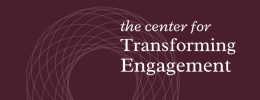


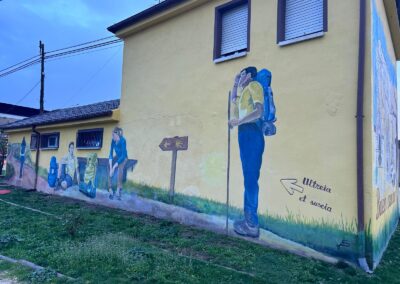
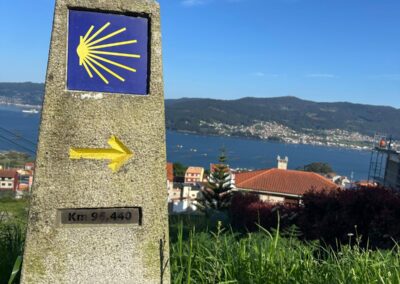
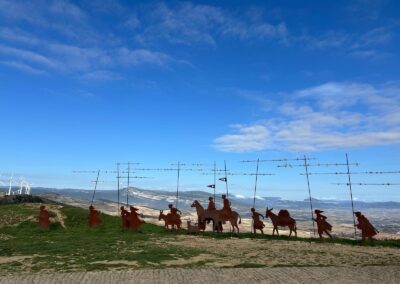
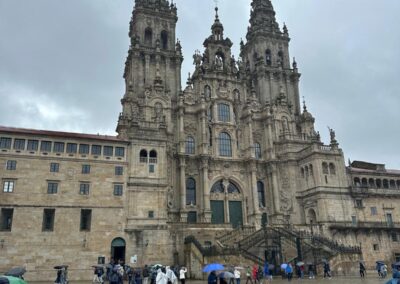
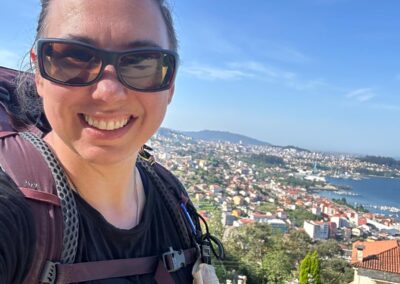
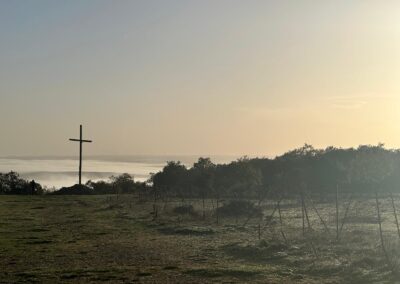
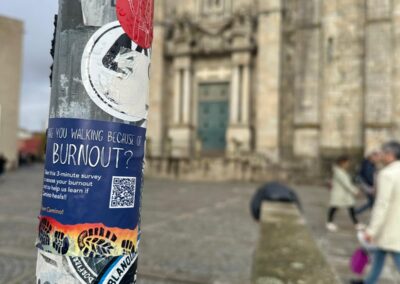

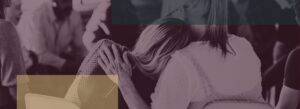
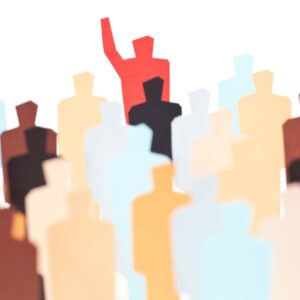
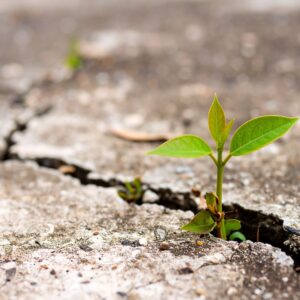

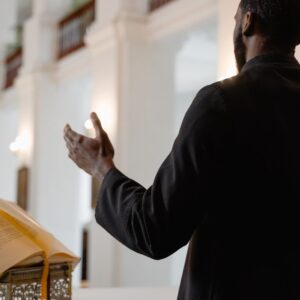

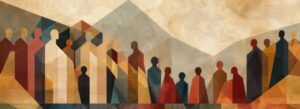


0 Comments